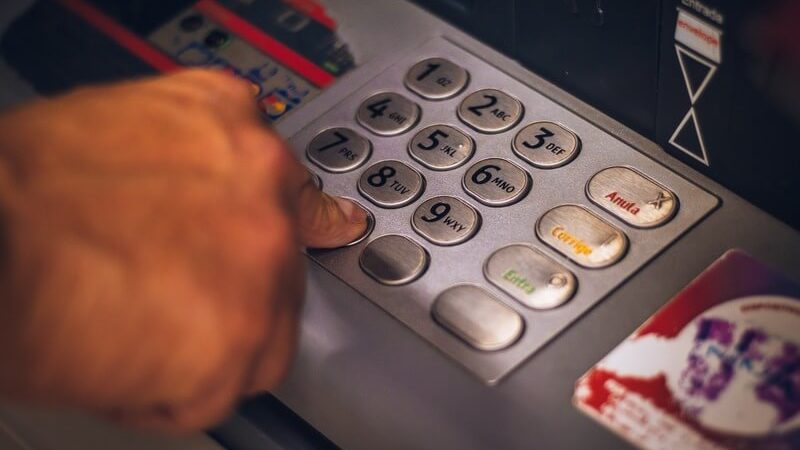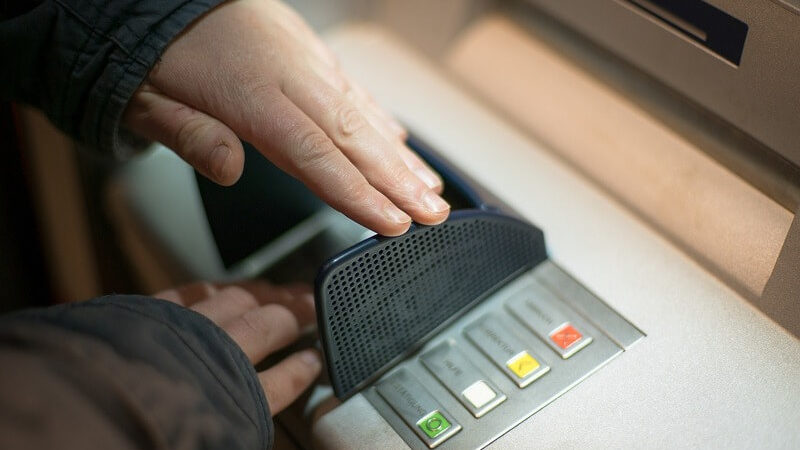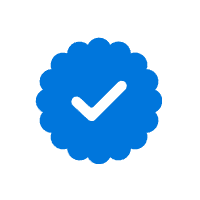How to Protect Your Bank Account From Identity Theft

Photo by Eduardo Soares
It was a typical McDonald’s visit.
A Virginia woman made a quick trip through a McDonald’s drive-thru to buy a Happy Meal for her son.
Once she was home, she noticed that more than $300 had been charged to her account. Someone had bought wigs, hair supplies, and food using her card.
As she was on the line with her bank, the woman realized the card in her hand wasn’t her own. The cashier had swapped the cards.
Police were able to access surveillance video that showed the McDonald’s worker using the swapped card to make purchases. Now, the victim is warning others about the dangers of having a debit card in a worker’s hands, even temporarily.
And unlike a credit card, a debit card hits your bank account directly.
What Can Scammers Do to Your Bank Account?
We rely on our bank accounts to pay our bills. For that reason, of all types of fraud, bank account fraud can be the most damaging.
Whether someone grabs your debit card, your bank account number, or your login credentials, a scammer can hit your bottom line. Here are a few reasons you won’t want your bank account in the wrong hands.
1. Empty Your Account
The example above demonstrates just how quickly a scammer can rack up charges.
Whether it’s $500 or $5,000, unless you keep a large sum of money in checking, it’s going to be a problem.
I have payments coming out of checking throughout the month. I couldn’t even tell you which bills post when, aside from my mortgage–I always know when that’s coming through.
The last thing I’d want was to be overdrawn because someone found a way to grab money from my bank account.
But that’s exactly where many fraudsters aim their scams. They want our money. Before you know it, a large chunk of change has been snatched from your bank account.
Getting the money restored can take time, and unless you have some savings you can move over to cover you temporarily, you could find yourself in a pinch.
2. Hack Into Your Account
Yes, a criminal with your debit card could EMPTY YOUR ACCOUNT in minutes.
But you know what can wipe out those funds even faster? Someone is hacking into your online account.
If someone manages to snag your username and password, that person would have the same access to your money that you have.
Does your bank use a peer-to-peer app like Zelle? Scammers could send money straight from your account to theirs.
Before you know it, you could end up with a zero balance.
There are limits, though. Hopefully, your bank has security measures in place that would keep the person from permanently taking over your account and having debit or credit cards sent to their address.
If you’re concerned about this, contact your bank and ask about security protocols.
3. Commit ACH Fraud
If your employer pays you using direct deposit, it’s likely through the automated clearing house (ACH) system.
This is known as (brace yourself for another acronym) an electronic funds transfer (EFT).
All someone needs to move money into your account is your bank’s routing number and your checking account number. That information is printed directly on your checks and deposit slips. Lose those (or write a check to the wrong person), and that information is out in the wild.
I know what you’re thinking. If someone wants to transfer money to your account electronically, more power to them, right?
Sure. But don’t forget that ACH payments also go in the other direction. I pay some of my bills that way. I just had to authorize the funds to be taken from my account each month and provide my account and routing information.
With ACH fraud, a scammer finds a way to fake that authorization to make your bank happy. Since the scammer already has your account and routing information, typically, all that’s necessary is to fake your signature.
If your bank’s security measures aren’t all that strict, the scammer might not even have to know how you typically sign your name.
4. Create Fake Checks
Yes, personal checks aren’t as popular as they once were. (Business checks aren’t, either, actually.) But they still exist.
With your bank account and routing number, a criminal could PRINT FAKE CHECKS and use them at the few places where checks are still accepted.
Someone could, for instance, pay bills like mortgage, rent, and utilities using a check. My hairstylist still accepts checks, too, although she usually is well acquainted with the clients who pay her.
Fake checks could have you on the hook for thousands of dollars before you know it. You’d have to work to prove that you weren’t the person writing the checks.
5. Launder Money
Money laundering doesn’t have anything to do with keeping your cash clean.
With money laundering, you see strange deposits in your account. Great, you think. Free money.
Not so fast.
Strange deposits can be a sign someone’s running illegally obtained money through your account.
With money laundering, criminals deposit money into various accounts to park it while they cook the books to justify the funds. Once they’re ready, they move the money into their own accounts.
Since it looks like it transferred from a legitimate source (your checking account), scammers figure they’re less likely to get caught.
If you notice strange deposits to your account, no matter how small, it might be a sign someone’s trying to funnel funds through your account. Contact your bank immediately.
6. Make Purchases
If a criminal has your physical debit card, this is a no-brainer.
If someone steals your debit card number, though, you might be safe.
In most cases, someone will also need the expiration date and CVV (card verification number) to use your card. That CVV is on the back of your card strip, so it’s not quite as easy for criminals to grab.
But what if someone gets your checking account number?
That’s even tougher to use. In most cases, someone will need your routing number, as well. Each bank has a number, so a simple web search will provide it as long as the person knows where you bank.
However, things are a little trickier when it comes to buying things with your checking account number. Some online retailers let you make purchases using your checking account number, but they’re few and far between.
It’s more likely that the person could use the information to set up recurring subscriptions, which fits under the “ACH” banner we mentioned above.
How to Secure Your Bank Account From Hackers?
You can keep all your money in cash inside your house.
However, how closely would you protect that cash if you did that, though?
You’d probably lock it away in a fireproof, waterproof safe and guard that safe with all you had. It is, after all, the money you need to pay your bills and keep a roof over your head.
The same goes for your bank account. You should do everything you can to keep your money safe and sound. That includes protecting your username, password, bank account information, and payment cards.
Here are some things you can do to keep each of those elements safe.
1. Use Debit, Not Credit
I can still remember when debit cards first came out.
What was this magic card that replaced cash and checks? You just had to swipe the card, and the money came straight out of checking.
Those were the days before you could earn tons of cash back on your credit card purchases. Credit cards were evil. They encouraged us to rack up tons of debt that we’d have to pay interest on.
But over time, experts began issuing new warnings. Debit cards were bad. There are a couple of reasons for that.
Credit cards require signatures. Debit cards require only a PIN.
All someone needs is your card information plus that PIN, and unless someone asks for ID, that person can spend away.
But there’s another reason my debit card remains in my wallet (aside from the rare ATM withdrawal). Fraud protection.
I know, I know. Fraud protection extends to debit cards, too. But there are a couple of ways it’s different:
- With a credit card, you’re only liable for up to $50 in charges. With debit, your liability is based on how quickly you reported the loss after someone used the card. You’ll need to report debit card theft within two days to limit your liability to only $50.
- With both credit and debit cards, card issuers have up to two full billing cycles to investigate the fraud. That can be as long as 90 days. If someone has charged thousands of dollars to your credit card, it will only impact your credit limit. If that money comes out of your bank account, it will affect your balance.
That last part is what permanently scared me away from using a debit card. I once had someone rack up $5,000 in unauthorized credit card charges literally overnight.
I don’t know about you, but $5,000 is a lot to come out of my checking balance at once. Whether you have the money to spare or not, it’s just a pain to see your balance take that big a hit for up to three months.
2. Be Careful with Checks
I have a checkbook, but I rarely use it. It never leaves the house, actually. Occasionally, someone performs work on our house, and a check is the only payment option.
I’m not alone in kicking checks to the curb.
Check use has been on a steady decline since 2000. Today’s consumers pay with plastic or by app. Even cash has taken a back seat to digital payment methods.
Convenience is a big reason for that. But consumers also like the ease of paying with a tap on a screen or a swipe of a card.
If you’re still using checks when other payment methods are an option, it might be time to reconsider.
The information printed on a check can give identity thieves a big headstart. Using your mailing address, name, checking account routing number, and signature, someone could pose as you and even take over your account.
There’s also the issue of check washing. A crafty scammer can remove the information you’ve written on a check, then write whatever they want in the “deposit to” and “amount” fields.
3. Set Up Alerts
Staying on top of your bank account is the first step toward preventing fraud.
You should keep an eye on your account, even if you just log in every morning and scan for signs of unauthorized transactions.
But you can set up alerts that will keep you on top of things throughout the day.
I prefer to set them up by threshold. That means I’m not getting an alert every time my husband or I spend $10 or $20. The only downside to that is sometimes criminals push a few low charges through to test a card before they go for the big spend.
That’s where identity theft protection can come in handy.
Instead of watching your account transactions like a hawk, you’ll have a service monitoring for signs of identity fraud.
Even better, with services like Aura, LifeLock, and IdentityForce, you’ll also get financial coverage and expert assistance if your identity is compromised someday.
Simply having this protection in place can make a big difference.
4. Protect Your Passwords
A hacker can do untold amounts of damage to your financial accounts.
Yes, if someday a scammer finds a way into your Google or Facebook account, it can be bad. You likely have information inside that could be used for identity theft.
However, the fraud that can happen with access to your bank account is definitely worth preventing.
Here are some steps you can take to safeguard your bank account login:
- Try to make your username original between accounts. Don’t include elements of your first or last name or anything else that could be guessed by someone who knows you.
- The same goes for your passwords.
- Enable multifactor authentication when available.
- Never share your usernames and passwords with others, including when someone calls claiming to be from your bank.
What to Do If Your Bank Account Is Compromised?

Image by Sebastian Ganso
The worst has happened. Your bank account has been compromised.
Maybe someone stole your checking account and routing number and found a way to use it for fraud. Or maybe someone hacked into your account or swiped your debit card number.
However the fraud took place, there are some things you can do once you’re aware fraud has hit your bank account.
1. Contact Your Bank
Your first step should always be to pick up the phone and contact your bank. They can take measures to stop further fraud from happening.
Plus, as we mentioned above, early reporting is key to reducing your own liability. That’s especially true if your debit card was stolen.
Your bank may want to put a hold on your account or even close it and open a new one.
This is always where the hard work begins. If your account (or card) number changes, you’ll need to update it with every creditor who uses that information for autopay.
2. Report It
Identity theft is a growing problem.
That’s why the Federal Trade Commission set up an easy way to report identity theft. You’ll just go to IdentityTheft.gov and follow the steps.
The site will also give you a step-by-step guide to reducing and repairing damage caused by identity theft.
While you’re at it, consider whether it’s worth filing an official police report. In some cases, you can do that online.
Having documentation of the crime itself can help if you experience identity theft issues down the road.
3. Monitor Your Accounts
Identity theft can be tricky.
In some cases, you see no immediate activity, only for it to rear its ugly head months or years down the line.
It’s important to keep an eye on your financial accounts long after you suspect your information might have been compromised.
Don’t stop there, either. Consider pulling your credit reports periodically to look for inaccurate entries. You’re entitled to one free credit report from all three credit bureaus. There are some instances where you can get a report more often.
For an extra layer of protection, consider freezing your credit. This can help stop fraud at the bank account level, ensuring a scammer can’t use your information to apply for new accounts or loans using your information.
✎ Related: Mobile Banking App Security: How Safe Are Your Accounts? ➔
Conclusion
Account fraud can happen to the best of us, no matter what preventive measures you take.
With access to your finances, though, scammers can do untold amounts of damage. Any measures you can take to keep your account numbers, debit cards, and login information away from prying eyes can help.
The good news is that it typically takes a combination of information to commit full-on identity theft. The bad news is that financial theft can happen with limited information. The more you can do to keep yourself safe, the better.
✎ Related: What Can A Scammer Do With Your Bank Account Number? – 6 Threats ➔



